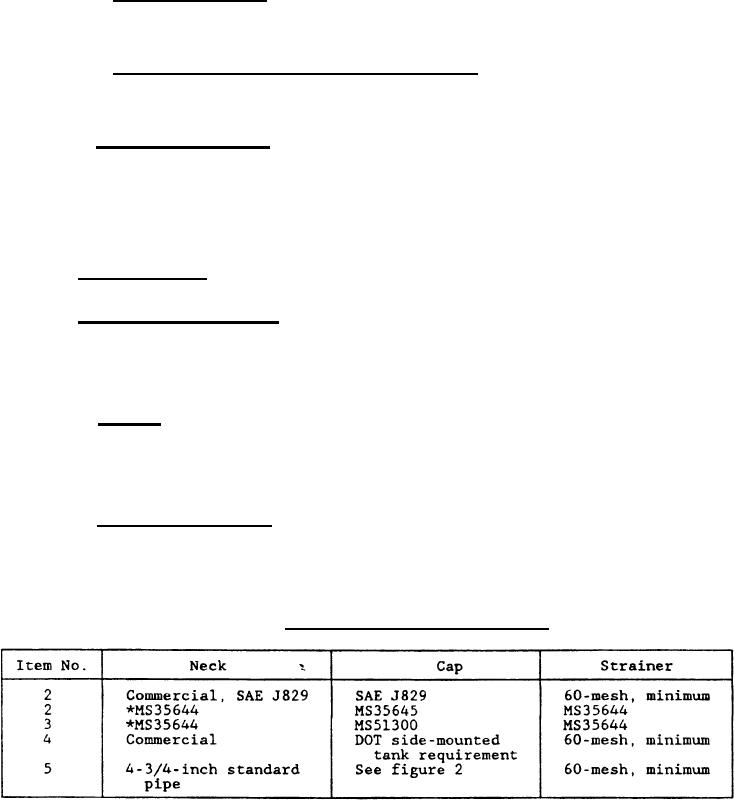 |
|||
|
Page Title:
Identification of materials and finishes |
|
||
| ||||||||||
|
|  MIL-T-46786B
deterioration that may be encountered in any of the applicable operating and
storage environments to which the fuel tanks may be exposed.
3.3.1.1 Dissimilar metals. Dissimilar metals shall not be used in
intimate contact with each other unless protected against galvanic corrosion.
Dissimilar metals and methods of protection are defined and detailed in
MIL-STD-889.
3.3.1.2 Identification of materials and finishes. The contractor shall
identify the specific material, material finish or treatment for use with
component and subcomponent, and shall make information available upon request
to the contracting officer or designated representative.
3.3.2 Recovered materials. For the purpose of this requirement, recovered
materials are those materials which have been collected from solid waste and
reprocessed to become a source of raw materials, as distinguished from virgin
raw materials. The components, pieces and parts incorporated in the fuel
tanks may be newly fabricated from recovered materials to the maximum extent
practicable, provided the fuel tanks produced meet all other requirements of
this specification. Used, rebuilt or remanufactured components, pieces and
parts shall not be incorporated in the fuel tanks.
3.4 Threaded parts. Threads shall be in accordance with FED-STD-H28.
Self-tapping screws and sheet-metal screws shall not be used.
3.5 Fuel tank construction. Unless otherwise specified herein, fuel tank
construction shall conform to engineering practices of the fuel tank industry.
Fuel tanks shall be constructed in accordance with the requirements of the
equipment specifications (see 3.1.1). Fuel tanks shall not incur leaks,
structural failure, or permanent deformation when tested as specified in
4.5.2.3, 4.5.2.4, and 4.5.2.5.
3.5.1 Baffles. Unless otherwise specified (see 6.2), baffles shall be
required. Baffles shall not be located under the filler back and shall not
interfere with the operation of the fuel measuring device. When specified,
(see 6.2), reticulate foam may be used for baffling and safety purposes in all
t ypes provided the fuel acceptance requirement specified in 3.5.10 is met and
the operation of the fuel measuring device (see 3.5.6) is not affected.
3.5.2 Filler and fittings. A cap (see 3.5.2.1), strainer (see 3.5.2.3),
chain (see 3.5.2.1), filler neck (see 3.5.2.2), and other necessary fittings
shall be provided with each tank. Unless otherwise specified (see 6.2), t hese
items shall conform to engineering practices of the fuel tank industry and as
specified herein (see table II). The diameter of the filler neck and
subsequent fittings shall be as specified (see 6.2).
TABLE II.
Cap and strainer requirements.
*Not to be used on type II and type III fuel tanks.
7
|
|
Privacy Statement - Press Release - Copyright Information. - Contact Us |